Accoucheur's Antique
7xCoke Home
Medical Antique Collection


 |
 |
|
Ovariotomy Trocar
Circa
1865
|
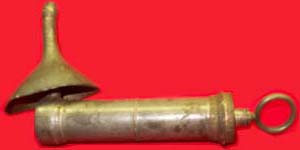 |
 |
|
Circa 1860's |

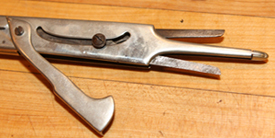 |
| Hysterotome Two winged knives to widen cervical cannal to accomodate a larger instrument to pass through the cervix into the uterine cavity such as the eccraseur to remove endometrial polyp. |
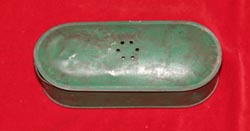 |
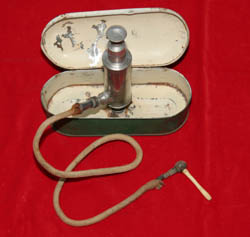 |
|
19th Century French Clyster / Vaginal Douche Set A rare clyster pipe from France. Complete with the original metal box. The irrigant is placed in the metal box. The vaginal douche syringe is screwed to the box . The tip is made out of ebony and ivory. |
| Vaginal
Douche Set |
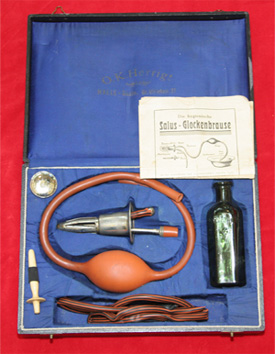 |
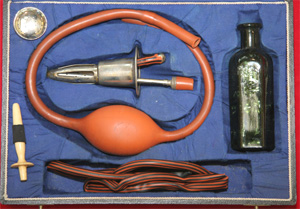 |
|
Pre 1900 indications for vaginal douche: 2. Prophylactic vaginal douche if the patient is subjected to repeated examination during labor 3. After first week post-partum presence of foul smelling lochia |
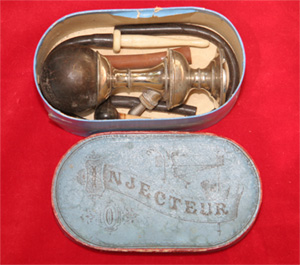 |
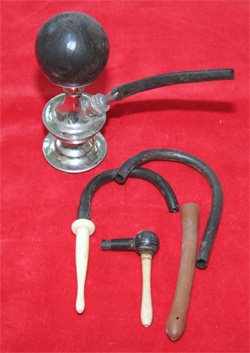 |
|
Enema
Set
Thomas Denman in
1795 recommended
enema to stimulate the uterus for treatment of prolonged labor.
Enemas of linseed or of flour and water were used during
pregnancy. |
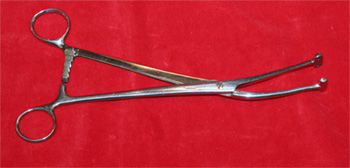 |
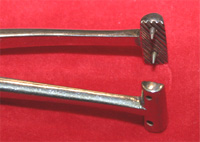 |
 |
Willett's
Placenta Previa Forceps
In 1925, Willett
devised a toothed forceps to manage placenta previa. The placenta
was perforated through the vagina and this forceps was attached to the
fetal scalp to create compression to the placenta. Two pounds of
weight was applied to the clamp over a pulley. Ref: De
Lee- Greenhill Obstetrics 9th edition 1947. |
 |
|
Also called the Willet's Scalp Forceps. Another way for helping get a dead baby out was to clamp the scalp of the baby and apply traction with a two pound weight hung over the end of the mother's bed as illustrated above. Often times the scalp of the baby tore off from the weight. It was also associated with increased incidence of maternal infection. Ref: From Witchcraft to Wisdom. Geoffrey Chamberlain. RCOG Press, 2007. |
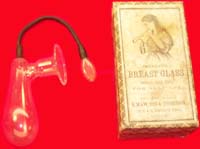 |
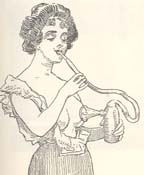 |
|
Circa: 1880 |
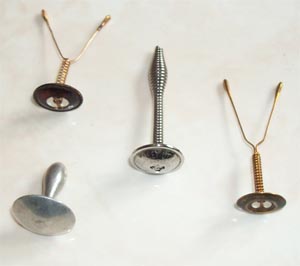 |
Intrauterine Wishbones & Stem Plugs
These birth control
devices
were sold and advertised as pessaries. They were place in
the cervix with the stem inside the uterine cavity. Visit Fact Files on
this web. |
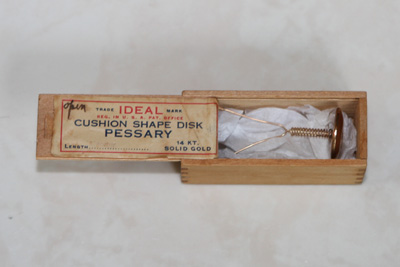 |
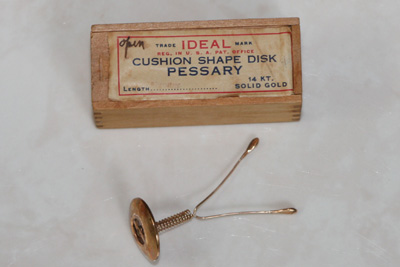 |
|
Boxed Pessary A cushion shape disk pessary by Ideal. The wishbone pessary is marked 14K solid gold and it comes with its original box and sliding cover. |
 |
 |
 |
|
Medical instruments from the
end of the 19th
century through early 1900's, include descriptions of "pessaries" that
resemble modern IUD (Intrauterine device). The existence of
Comstock
laws that prohibit the use of the mails for contraceptive devices may
have
been the reason for the false advertisement. See
also Fact Files on this web. |
|
|
 |
 |
|
3 cm height, 2 cm base c 1880s |
Spring stem 7 cm length, 2cm base. c Early 1900s |
 |
 |
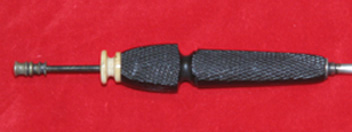 |
Lee's Membrane Perforator 19 Century
amniotomy instrument with a crosshatched ebony and carved ivory handle.
Pressure on the thumb piece pushes a spring loaded sharp pointed
trochar.
|
|
|
 |
 |
 |
|
c 1890 |
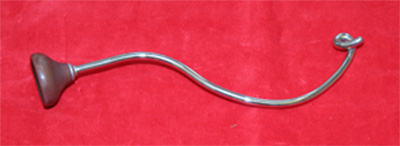 |
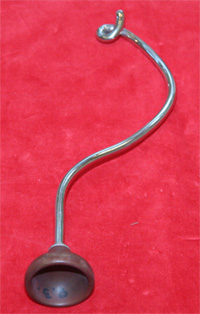 |
|
Aveling's
Repositor
19
Century gynecologic
device placed in the vagina with the red end on the inverted uterus,
the other end was tied with straps to keep it in place and thus correct
the chronic uterine invertion. |
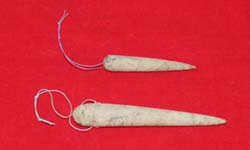 |
Circa 1870 |
|
|
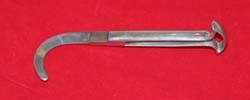 |
Circa Early 1900 Falcetta-
a sickle shaped bistoury used to cut pubic bone joint , the procedure
called pubiotomy or hebotomy
|
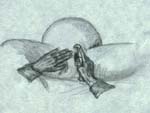 |
|
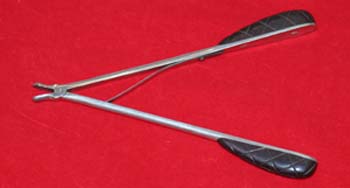 |
c. 1880 Unplated steel with checkered ebony handle. Made by Katsch, Munich. |
 |
 |
|
Circa 1890 |
 |
Thomas
Scoop Circa 1870 Used
to remove sessile uterine fibroids. It has a serrated border and
a ribbled ebony handle. See also the same item on destructive OB
instruments link for its other use. Signed W.F. Ford.
|
Back to Top
All statements in this web page regarding date, age, and origin are statements of opinion. All photos and materials on this web page are protected by copyright laws. Please obtain direct permission from
 to
use any and all materials on this site, including photographs and
drawings.
to
use any and all materials on this site, including photographs and
drawings.
|
|
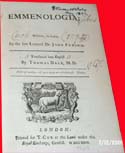 |
By Dr. John Freind 1729 First Edition.
A book about menstruation.
|
 to
use any and all materials on this site, including photographs and
drawings.
to
use any and all materials on this site, including photographs and
drawings.